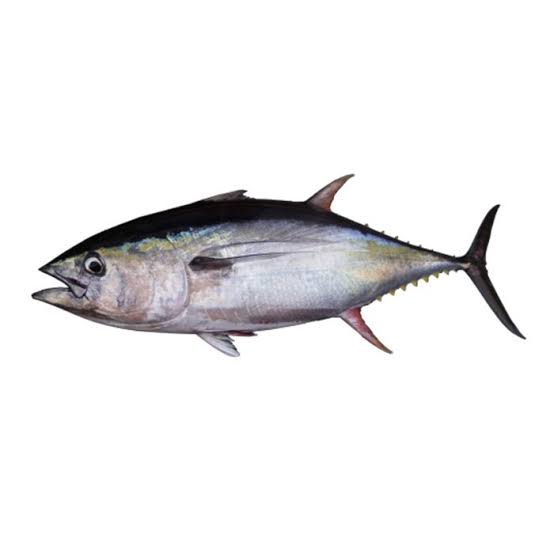Tuna fish is a popular seafood choice for many people in India and across the globe. Known for its firm texture, rich taste, and significant health benefits, tuna is a versatile ingredient for various dishes. Whether prepared fresh, canned, or frozen, tuna is enjoyed by seafood lovers for its high protein content, omega-3 fatty acids, and abundance of vitamins and minerals. This guide will explore the price of 1 kg tuna fish in India, factors affecting its cost, regional variations, types of tuna, and more.
Introduction to Tuna Fish in India
Tuna fish, a part of the Thunnini family, is a staple in many coastal diets around the world. While the global demand for tuna continues to grow, India, with its extensive coastline, remains a significant consumer of tuna in both fresh and processed forms. Tuna is favored for its quick preparation and the nutritional benefits it offers.
India’s seafood industry is primarily concentrated along its vast coastline, and cities such as Mumbai, Chennai, and Kochi are hubs for fresh fish and seafood distribution. Coastal and inland areas, however, experience significant price fluctuations, influenced by factors such as distance from the coast, supply chain constraints, and market demand.
While tuna is available in both fresh and frozen forms, the former is often preferred for its superior taste and texture. Additionally, tuna is available in a variety of species such as yellowfin, skipjack, bigeye, and bluefin, which vary in price due to demand and availability.
In this article, we will cover how the price of tuna fish in India varies, how to determine the best tuna deals, regional price differences, and the best ways to incorporate tuna into your diet.
1. Factors Influencing the Price of Tuna Fish in India
The cost of 1 kg of tuna fish in India can vary greatly depending on several key factors. Understanding these influences can help buyers make more informed decisions when purchasing tuna. Let’s dive deeper into the key factors affecting tuna prices:
a. Type of Tuna
Tuna fish comes in various species, each having different costs associated with them. The most common types of tuna found in Indian markets include:
Yellowfin Tuna: This is one of the most common varieties available in India. Known for its firm texture and mild flavor, yellowfin tuna is often used in sushi, sashimi, and grilled dishes. The price of yellowfin tuna can range between ₹1,000 and ₹1,500 per kg in coastal cities, with inland prices being somewhat higher.
Skipjack Tuna: Skipjack is typically smaller than yellowfin tuna and is found more abundantly. It is often canned, but fresh skipjack tuna is available in many markets, especially in coastal regions. Its price generally falls between ₹400 and ₹600 per kg for frozen varieties.
Bigeye Tuna: Bigeye tuna is prized for its high-fat content and is more expensive than yellowfin tuna. It can be found in premium markets and may cost between ₹1,500 and ₹2,000 per kg.
Bluefin Tuna: Bluefin tuna is one of the most expensive varieties, mainly due to its rarity and high demand, especially in international markets. While it is less commonly found in Indian markets, when available, it can cost between ₹2,000 and ₹2,500 per kg or more.
Each species of tuna has its own set of characteristics, and the price is influenced by the fishing methods, processing costs, and consumer demand for a particular variety.
b. Fresh vs Frozen Tuna
The distinction between fresh and frozen tuna significantly affects its price. Fresh tuna, often prized for its quality and flavor, is generally more expensive than frozen tuna due to the costs of transportation, handling, and limited shelf life. Fresh tuna requires immediate consumption or careful refrigeration, contributing to higher prices in markets outside coastal areas.
Frozen tuna, on the other hand, is more affordable and has a longer shelf life, making it an excellent choice for people who want to store tuna for later use. Frozen tuna, while less expensive, is still nutritious and can be used in a wide range of dishes, although some people prefer the texture and flavor of fresh tuna.
Frozen tuna prices can range from ₹400 to ₹800 per kg depending on the quality, while fresh tuna can range from ₹1,000 to ₹1,800 per kg, depending on the region and species.
c. Location and Regional Variations
India’s geography plays a crucial role in determining tuna prices. Coastal cities typically offer fresher and cheaper tuna due to their proximity to fishing grounds, while inland cities experience higher transportation costs, which can significantly inflate the price. Here’s how prices vary in different regions:
Coastal Cities: Cities like Mumbai, Chennai, Kochi, and Visakhapatnam have lower tuna prices because of easy access to local tuna fisheries. Fresh tuna, especially yellowfin or skipjack, is often sold at ₹600 to ₹1,200 per kg in these areas. In these cities, consumers are more likely to purchase fresh tuna directly from the port or market, ensuring it is priced reasonably.
Inland Cities: Cities like Delhi, Bangalore, and Hyderabad often have higher prices for tuna because it has to be transported over long distances. Fresh tuna in these areas can cost ₹1,000 to ₹1,800 per kg, while frozen tuna may cost ₹800 to ₹1,200 per kg.
This variation in price based on geographical location is a key consideration for consumers looking for the best deals. Coastal residents often have the advantage of fresher products at lower prices, while inland consumers should consider buying frozen tuna or sourcing from local fishmongers who offer competitive pricing.
d. Fishing and Import Costs
India has a robust fishing industry, with tuna being caught in both domestic waters and international oceans. The cost of tuna is affected by the fishing techniques used, fuel prices, and whether the fish is caught locally or imported.
Domestic Catch: Locally caught tuna, especially yellowfin and skipjack, is generally more affordable due to the reduced transportation costs. However, depending on seasonal availability and demand, the prices may fluctuate.
Imported Tuna: Imported tuna, particularly from countries like Sri Lanka, Thailand, and Japan, is more expensive due to import duties, shipping, and handling fees. Imported bluefin and bigeye tuna are particularly costly due to their limited availability and higher demand.
Understanding whether the tuna is locally sourced or imported can help consumers gauge its price more accurately.
e. Seasonality and Market Demand
Like most seafood, the price of tuna is affected by seasonal availability. During peak fishing seasons, when tuna is plentiful, prices tend to drop. Conversely, during off-seasons when the supply is limited, prices can increase. For example, in monsoon months, fishing activity is often restricted, leading to a dip in supply, which consequently raises prices.
Additionally, demand during festivals and holidays can increase, driving up the price of fresh tuna. Consumer preferences for tuna during specific months, like around Christmas or New Year, can also cause temporary price hikes in the market.
2. Current Price Range of Tuna Fish in India (2025)
As of 2025, the price of 1 kg of tuna fish in India can be categorized into several price ranges based on freshness, species, and market location. Below are the general price ranges for different varieties of tuna fish:
Frozen Skipjack Tuna: ₹400 to ₹600 per kg
Fresh Yellowfin Tuna: ₹1,000 to ₹1,500 per kg
Fresh Bigeye Tuna: ₹1,500 to ₹2,000 per kg
Premium Bluefin Tuna: ₹2,000 to ₹2,500 per kg
a. Cost Breakdown Based on Type
As mentioned earlier, different types of tuna will have different prices:
Frozen Skipjack Tuna: Generally the least expensive type of tuna. Skipjack tuna is commonly used in canned tuna products and is available in frozen form at a lower price.
Yellowfin Tuna: This type is highly sought after and usually found fresh in coastal cities. It is considered versatile, used in dishes ranging from sushi to curries.
Bigeye Tuna: Known for its higher fat content, bigeye tuna is a premium product in India. It’s prized by gourmet restaurants, leading to higher prices.
Bluefin Tuna: This is the most expensive variety due to its rarity and high demand in international markets. The price can be significantly higher than other types of tuna, particularly if it is imported from regions like Japan.
b. Local vs Imported Tuna Price Comparison
While fresh tuna from local sources is generally affordable in coastal areas, imported tuna can be significantly more expensive, especially during high demand periods.
3. Regional Price Variations of Tuna
The price of tuna fish in India depends heavily on where you live. Coastal cities benefit from access to fresh catches, which typically results in lower prices. In contrast, inland cities must rely on frozen tuna and bear higher transportation costs.
a. Mumbai and Coastal Areas
Mumbai, being one of the largest coastal cities in India, offers fresh and affordable tuna. With multiple fishing docks and daily shipments of seafood, prices for fresh tuna range from ₹700 to ₹1,200 per kg, depending on the type and size of the tuna.
b. Chennai, Kochi, and Other Southern Coastal Cities
In Southern cities like Chennai and Kochi, fresh tuna is more readily available. Here, you can find both frozen and fresh varieties. Prices for yellowfin tuna are usually between ₹800 and ₹1,500 per kg.
c. Delhi, Bangalore, and Inland Areas
In inland cities like Delhi and Bangalore, where fresh tuna is not as readily available, prices for fresh tuna can range from ₹1,000 to ₹1,800 per kg. Frozen tuna is a more affordable option in these areas and can be found at ₹800 to ₹1,200 per kg.
4. Tips for Buying Tuna Fish in India
To get the best value when buying tuna in India, consider the following tips:
a. Buy Directly from Local Fish Markets
In coastal areas, buying tuna directly from fish markets can help you secure fresher fish at better prices. Fish markets typically have access to tuna caught within hours of sale, ensuring superior freshness.
b. Check for Quality
Whether buying fresh or frozen tuna, quality is key. For fresh tuna, look for firm, bright-colored flesh that is free from brown spots. Frozen tuna should be well-packed, without ice crystals or freezer burn.
c. Purchase During Peak Season
If you live in a coastal city, tuna may be cheaper during peak fishing seasons when there is an abundance of fish in the market. For inland buyers, consider purchasing frozen tuna during sales events for better deals.
d. Compare Prices
If you’re in an inland city, shop around. Different supermarkets or fishmongers may have different price ranges. Online seafood retailers also provide competitive prices with home delivery options.
5. Health Benefits of Tuna Fish
In addition to its rich taste, tuna fish offers several health benefits:
High Protein: Tuna is a high-protein food that supports muscle growth and tissue repair.
Rich in Omega-3 Fatty Acids: Omega-3s found in tuna contribute to heart health, reduce inflammation, and improve brain function.
Low in Fat: Tuna is naturally low in fat, making it an excellent option for weight management.
Vitamins and Minerals: Tuna is rich in vitamins such as Vitamin D, B12, and minerals like selenium and magnesium, supporting overall health.
Cooking Ideas for Tuna Fish
Tuna is a versatile ingredient that can be prepared in various ways. Here are some popular dishes:
Grilled Tuna Steaks: Season with salt, pepper, and herbs, then grill to perfection.
Tuna Salad: A healthy, light dish made with fresh vegetables and your choice of dressing.
Tuna Curry: A flavorful dish from coastal regions, made with spices and coconut milk.
Tuna Sushi: A Japanese classic that uses fresh tuna, rice, and seaweed.
Conclusion
The price of 1 kg of tuna fish in India varies significantly based on factors such as type, freshness, location, and seasonal demand. Coastal cities offer fresher and more affordable tuna, while inland cities often have higher prices due to transportation costs. By understanding the factors that influence tuna prices, you can make informed choices and enjoy the nutritional benefits of this versatile and delicious fish.
Whether you are purchasing tuna for a family dinner or looking for a healthier source of protein, tuna is an excellent option. By following the tips in this guide, you can find the best deals and enjoy the variety of ways tuna can be enjoyed in Indian cuisine.


